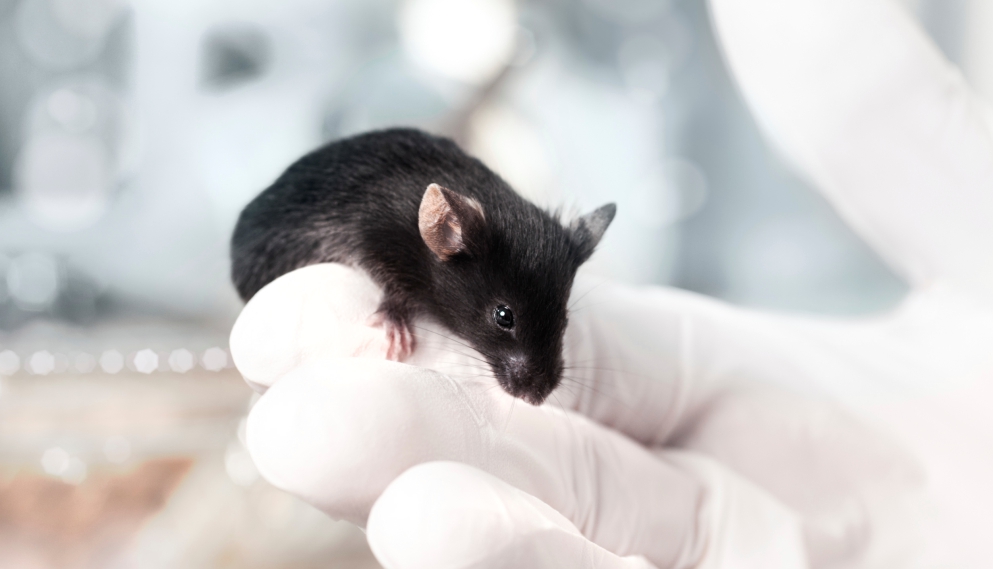Duchenne Muscular Dystrophy (DMD) is a genetic disorder causing progressive muscle weakness due to an inability to produce functional dystrophin. DMD primarily affects skeletal muscle and the heart, resulting in serious respiratory complications later in life.
Unfortunately, there is currently no cure for DMD, but ongoing research efforts continue to contribute to the development of therapies to control the progression of the disorder.
Recently, Nature Scientific Reports and JCI Insight published two articles highlighting two very different approaches to DMD research in mouse models: exercise and adeno-associated virus-mediated CRISPR editing. Despite the difference, both use Aurora Scientific’s 1300A 3-in-1 Whole Animal System to measure skeletal muscle force following treatment.
Moderate exercise improves function and increases adiponectin in the mdx mouse model of muscular dystrophy
The extent to which exercise can affect those with DMD is still poorly understood. In their April 2019 publication in Nature Scientific Reports, Zelikovich et al. write,
“High intensity exercise has been suggested to exacerbate dystrophic pathology, but in the context of dystrophy, low intensity exercise may actually be beneficial.”
To investigate the effects of low- and moderate-intensity exercise on the mdx mouse model of DMD, the team evaluated skeletal muscle function, respiratory function and cardiac decline following 24 weeks of either low intensity (4 m/min), moderate intensity (8 m/min), or no exercise.
After 24 weeks, the researchers used the 1300A 3-in-1 Whole Animal System to measure tetanic force in-situ from the right side tibialis anterior muscle and performed fatigue analysis by repeating tetanic contractions until complete exhaustion of the muscle. They found that skeletal muscle function was improved in a dose-dependent manner in the low- and moderate-intensity groups, while grip strength declined for the sedentary group.
In addition, they found that exercise improved respiratory capacity and cardiac function, mitigating the decline associated with disease progression. In summary, they write,
“The effect of exercise…may potentially have an additive impact in muscle strength and function in addition to delaying respiratory and cardiac decline associated with disease progression.”
JCI Insight: AAV CRISPR editing rescues cardiac and muscle function for 18 months in dystrophic mice
As a genetic disorder, CRISPR/Cas9-mediated genome editing could potentially be used to restore dystrophin in individuals affected by DMD. This is an appealing solution – rather than treating the symptoms or slowing the progression of the disease, genetic editing could represent a lifelong cure. In December 2018, Hakim et al. from the University of Missouri School of Medicine published a paper in JCI Insight investigating this approach using the mdx mouse model of DMD.
Using adeno-associated virus-mediated (AAV) CRISPR, the team effectively deleted the harmful mutation coding non-functional dystrophin in the mice. At 6 weeks of age, they injected AAV-9 CRISPR vectors into the mice and evaluated the restoration of dystrophin expression, muscle force, fibrosis and heart function after 18 months.
The researchers evaluated muscle function of the extensor digitorum longus ex-vivo using a 305B dual-mode lever system and Dynamic Muscle Control (DMC) software, both from Aurora Scientific. Using Dynamic Muscle Analysis (DMA) software they calculated specific muscle force and muscle cross-sectional area.
The treatment was effective – Hakim et al. write,
“This modification not only significantly enhanced dystrophin expression in the heart, but also resulted in body-wide dystrophin restoration in skeletal muscle. Importantly, it reduced fibrosis in the heart and skeletal muscle, significantly increased skeletal muscle force, and enhanced cardiac hemodynamic function.”
While optimizing one’s exercise intensity could be of benefit to humans affected with DMD today, the use of gene editing in humans remains highly controversial. Regardless, whether the door is opened to a small improvement or a total cure, the value of translational research cannot be overstated.




